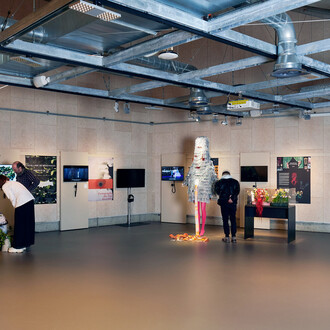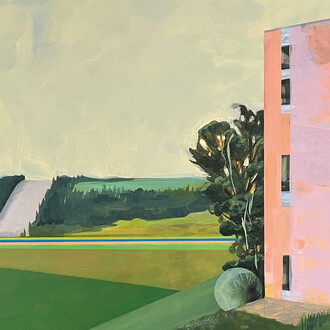A desire for moments of intense pleasure and passion is a universal feature of human existence. This exhibition explores the great diversity of ecstatic phenomena and traces their changing cultural meanings and representations in visual art.
The exhibition presents an extraordinary set of works by renowned modern and contemporary artists like Marina Abramović, Marlene Dumas, Meret Oppenheim, Auguste Rodin, Henri Michaux, Andy Warhol and Paul Klee. They depict ecstasy as a bodily and emotional state that defies representation – somewhere between life and death, asceticism and excess, pleasure and pain, suspension and fall, creativity and madness, liberation and dependency.
The term “ecstasy” stems from the Greek language and means “to be beside oneself.” Ecstasy is a state of intense excitement, overwhelming joy, unrestrained euphoria, unbridled jubilation, frenzied desire, spiritual rapture – but also of dizziness, delirium and delusion. The desire for such experiences is fundamentally human and is a universal cultural theme.
Ecstatic experiences are intense and often conflicting, making them difficult to capture in words and images. The French metaphor for orgasm, “la petite mort” (little death), conveys this contradiction. In moments of ecstasy, there is no longer a clear distinction between joy and pain, soaring and falling, spiritual transcendence and physical self-harm, liberation and dependency, and even life and death.
Ecstasy can be experienced in different ways: Sexuality, dance, religion, drugs, sports – these are just some of the means to achieve it. Even though ecstasy is a fundamental desire, society also regulates it. What meaning do we ascribe to ecstatic moments? What is permitted? Where do we draw the line? At what point does ecstasy become dangerous to society and the individual?
This exhibition explores the fascination with ecstasy in modern and contemporary art. This allure stems from the search for ways to escape society and its norms, loosen the grip of reason, and transcend physical, emotional, and spiritual boundaries. Ecstatic experiences may be fleeting and intangible, but they also open up the possibility of questioning contemporary social taboos – and gaining a broader understanding of human nature and our place in the world.
The exhibition is a collaboration between the Kunstmuseum Stuttgart and the Zentrum Paul Klee.






![Gego, Bicho 89/17 [Bug 89/17], 1989. Courtesy of Zentrum Paul Klee](http://media.meer.com/attachments/f079a1f4646d2c18046e435b0d7c6a40c4d590ab/store/fill/330/330/15240f8a7c2620c149272c56d3458458d719746e821a8c6a92e906b56287/Gego-Bicho-89-slash-17-Bug-89-slash-17-1989-Courtesy-of-Zentrum-Paul-Klee.jpg)


![Karel Appel, Le coq furieux [The furious rooster] (detail), 1952. Courtesy of Kunstmuseum Bern](http://media.meer.com/attachments/de322f88933729d2014dc4e021d4a6694046a744/store/fill/330/330/c26a6c5ef5e2ed397d4a2e9bc00ac739c40ba8384f45f9ce1ed85adba600/Karel-Appel-Le-coq-furieux-The-furious-rooster-detail-1952-Courtesy-of-Kunstmuseum-Bern.jpg)
![Ernst Ludwig Kirchner, Sonntag der bergbauern [Mountain peasants
on sunday] (detail), 1923-24/26. Courtesy of Kunsthalle Bern](http://media.meer.com/attachments/20a8137ccad773c13862ccdfc875e8e9140e882a/store/fill/330/330/2b752c5aa2aa5dd58dbb48294877d0648612d2f7494bb2ea5052c0c3ef43/Ernst-Ludwig-Kirchner-Sonntag-der-bergbauern-Mountain-peasants-on-sunday-detail-1923-24-slash-26.jpg)
![Arnold Böcklin, Meeresstille [Calm sea], 1887. Courtesy of Kunstmuseum Bern](http://media.meer.com/attachments/31f0fbf5fc85bf4c4f3420830f31c3f397dc0c0a/store/fill/330/330/9f1e7907383dd5889d45b340467c7e560675e5ed70f1c887e82a3da16e45/Arnold-Bocklin-Meeresstille-Calm-sea-1887-Courtesy-of-Kunstmuseum-Bern.jpg)




